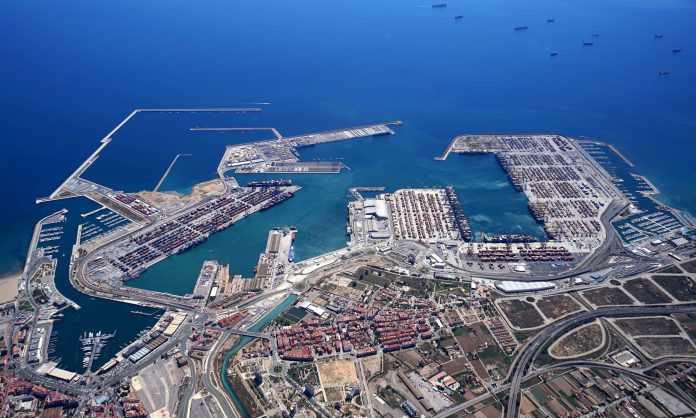The Port Authority of Valencia (PAV) has announced its plans for investment of more than US$280 million in railway improvements in València and Sagunto.
The PAV’s aim for the next years is to continue to increase the use of the train in freight traffic arriving and departing from Valenciaport.
Therefore, the port authority plans to invest approximately US$150 million in the next few years to improve rail accessibility in the Port of Valencia. The investment plan includes the following actions:
- Continuing with the remodelling of the Príncipe Felipe quay track bed and its adaptation to international gauge.
- Remodelling of the railway network between the Poniente and Costa docks.
- Adaptation of the network to UIC gauge between Muelle de Poniente and Muelle de Levante.
- Electrification of tracks on the northern network.
- Development of the Fuente de San Luis terminal.
- Road and rail network for northern terminal access.
- Supply of track equipment for the remodelling of the Muelle Príncipe Felipe terminal.
- Transfer of Public Container Terminal Doors.
- Supply of rail equipment for road and rail network between Muelle Poniente and Costa.
Regarding the Port of Sagunto, an investment of around US$116 million is planned as follows:
- Inland railway network in the Port of Sagunto.
- Railway access to the Sagunto port area.
- Improvements on the Sagunto-Teruel-Zaragoza line (in collaboration with ADIF) to continue with the construction of sidings for 750-metre trains.
- Other facilities on the Sagunto-Teruel-Zaragoza line (to be defined in collaboration with ADIF).
- Beach of tracks access to Puerto de Sagunto.
- Road and rail networks Sagunto Master Plan works.
Furthermore, PAV said that an additional US$18 million will be invested in the Vicálvaro Intermodal Station.
The port authority has already created its own unit to manage the railway traffic inside the Port of València, where 10 different companies already operate and compete.
“For Valenciaport, the train is basic and fundamental because for years we have been building a port of reference in the Mediterranean based on intermodality,” pointed out Aurelio Martínez, president of the PAV.
Martínez explains that “The railway is key in our present and future strategy because it allows us to reduce costs in the logistics chain, to improve the services we offer in the terminals and to take loads off the road and put them on the railways. Lorries will always be the benchmark for agility, accessibility and ductility, but rail will allow us to improve connectivity with our peninsular hinterland, connecting it with the main industrial centres.”
Additionally, the train fits in the port’s decarbonisation route and in its Plan 2030 towards zero emissions, according to the PAV’s president.
In the Valeciaport, 11% of the import/export containers it handles are moved by rail, which translates to over 200,000TEU in 2020. In terms of containerised goods moved by train, Valenciaport is three times the Spanish average, which stands at 4%, according to the port announcement.
In the last year, more than 4,000 trains have entered and left Valenciaport, with an average of more than 80 convoys a week linking the Valencian docks with the main corridors in Spain.
The Valencian port precinct is the first Spanish port and the fourth European port with the best connectivity according to the Port liner shipping connectivity index (LSCI) drawn up by the United Nations Conference on Trade and Development (UNCTAD).
“Our commitment to the railway is evident, both in the plans for investment in intermodality and the laying of double tracks within the port area,” said Martínez and went on to add, “We have also earmarked income obtained from our port customers to invest euros from the Port of Valencia in the lands of Teruel and Zaragoza; to improve railway connections with Aragon, a strategic enclave for the Valenciaport Community.”
Several shipping companies are already involved in the Valencia rail network, including the València-Teruel-Zaragoza route in their services.
MSC started up a rail service dedicated exclusively to reefer transport between Valencia and Zaragoza, while CSP Iberian Rail is already operating its new rail service linking the Port of Valencia with Zaragoza. Meanwhile, the French shipping group CMA CGM has also announced a new rail service between the Valencian precinct and Zaragoza.







